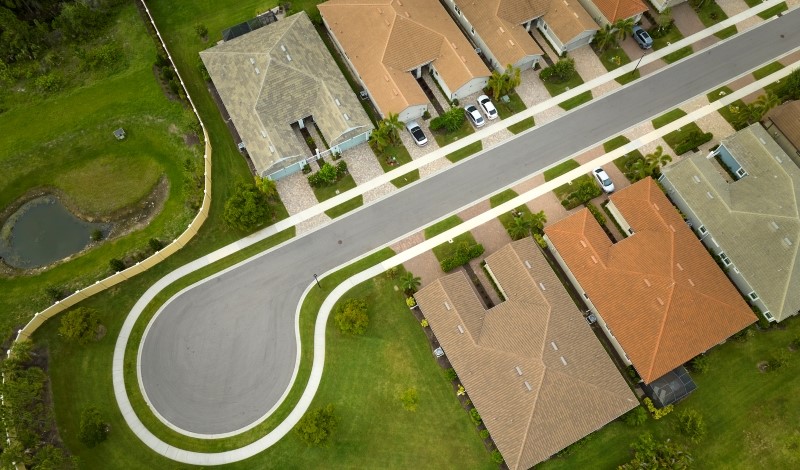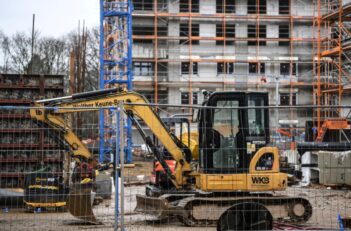
Private equity firms buy homes in droves but diminish homeownership opportunities for families in the process.
One of the fastest growing groups of new homeowners in the United States is not a particular demographic. It is a type of corporation.
Since the Great Recession, for-profit firms have bought tens of thousands of homes in metropolitan areas throughout the United States. Often, these firms are not mom-and-pop landlords looking to invest in local real estate. Instead, they are private equity firms looking to designate the traditional starter home as the newest kind of short-term, high-yield investment vehicle.
Today, corporate involvement in housing markets limits the stock of homes that individuals and families can own. To mitigate the negative impacts of widespread corporate home buying, policymakers must step in to ensure that the average person or family can still enter the world of homeownership.
After the 2008 housing crash triggered a global financial crisis, new federal, state, and local policies over housing and real estate spread quickly across the United States. Although these regulations were designed to stem the kind of speculative building that caused the housing crash in the first place, they had other effects as well.
Notably, those regulations made home building across the country much more expensive, slowing down the number of new homes that developers were able to build. This trend was especially pronounced in metropolitan areas experiencing considerable population growth. Throughout the 2010s, cities such as Houston, Charlotte, and Atlanta, for example, received large influxes of residents, even while their housing supply plateaued.
This trend has continued into the current period, and now, as demand for housing outstrips supply, the cost of housing is skyrocketing across the United States.
Only a few years after the housing crash, though, a new kind of actor entered residential real estate markets: private equity investors.
Private equity firms—companies funded by institutional investors, looking to make riskier but potentially more profitable investments—began to buy and resell homes that were foreclosed on during the Great Recession.
In addition, real estate developers backed by private equity entered housing markets and built both multi-family and single-family housing units very quickly. This construction helped provide desperately needed housing in metropolitan areas while private equity groups retained ultimate ownership over the housing units.
Although this activity has helped fill gaps in the national housing supply, it also created another problem: increased challenges to homeownership for individuals and families.
Given that much of the housing stock has been claimed by these institutional investors, families in the United States are increasingly shut out of opportunities to buy homes and unable to reap the socioeconomic benefits of homeownership, such as improved financial stability, educational attainment, and civic engagement.
And even if institutional investors intend to resell to interested homebuyers, bidding wars often occur as a result, further increasing home prices and making homeownership even more unattainable.
Because of these trends, the U.S. economy faces cascading effects that it has not faced before.
For example, younger individuals and families are hard-pressed to find affordable starter homes, forcing them to delay other consequential financial decisions, such as having children, to later in life.
Corporate ownership of many homes in a particular neighborhood can also increase crime and erode social cohesion across communities.
And ultimately, as U.S. residents find it increasingly difficult to achieve homeownership, Black and Brown communities are especially disadvantaged. For centuries, homeownership has been the most effective way to build and transfer wealth in the United States. As private equity firms continue to restrict opportunities for widespread homeownership, the racial wealth gap will likely only widen.
In characterizing highly complex and multifaceted housing markets, however, many observers disagree that private equity activity is entirely to blame for the housing shortage.
Private equity firms have, for example, helped to finance, build, or repair much of the stock of affordable housing that communities were struggling to create for years.
In addition, those hesitant to blame private equity entirely argue that private equity investors are not investing in residential real estate at a scale that can drive a nationwide surge in home prices.
Meanwhile, responses from administrative agencies vary, but they remain focused on the already-apparent downsides of widespread corporate homeownership.
During the COVID-19 pandemic, the Federal Trade Commission and the Consumer Financial Protection Bureau showed heightened concern over corporate landlords’ eviction practices. Research and congressional testimony later proved that the agencies’ instincts were right: Corporate landlords during the pandemic evicted tenants at higher rates than other kinds of property owners, even during the eviction moratoria mandated by the Centers for Disease Control and Prevention.
In addition, the U.S. Department of Housing and Urban Development has produced several research reports and policy statements about managing private equity investments in local housing markets. One of the agency’s reports highlights how institutional investors are “taking properties off the market for individual homebuyers and putting upward pressure on home prices and rents.”
As the United States and the rest of the world enter a post-COVID-19 environment, housing markets are in a state of constant flux. Labor market dynamics that took hold during the pandemic created “hot” housing markets across the country, driven by resident inflows and shifts in consumer preferences.
Now, as housing markets “cool,” policymakers must prioritize one idea: homeownership.
Real estate developers will continue to build homes and chip away at the nationwide gap in affordable housing, but policymakers should realize that building more homes is only the first step. Once homes are built, policymakers must create opportunities for families and individuals to own these homes, bringing the benefits of homeownership to families in the present, and to future generations as well.



